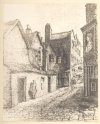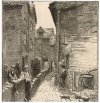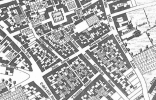W
Wendy
Guest
Here is a lovely drawing from Dent's book Old and New Birmingham. These were demolished around 1850 I think.




.... It is Court 9 house 6, and the entrance to court 9 seems to be between no 34 and no 34. Possibly the entrance was through an archway through one building which was all no 34. ...







This drawing, possibly by James Burgoyne, is labelled as John Street on Alamy. On the corner is the Queens Head which is discussed on the Steelhouse Lane thread. I know from reading this thread that the section of this lane shown in the drawing, nearest Steelhouse Lane was Newton Street. The section nearest Dale End was known as John Street. So was Newton Street ever formerly part of John Street ? Personally I think it's probably a labelling error by Alamy.

I assume the building on the left is a chapel in John Street. But what chapel ?
View attachment 185376
